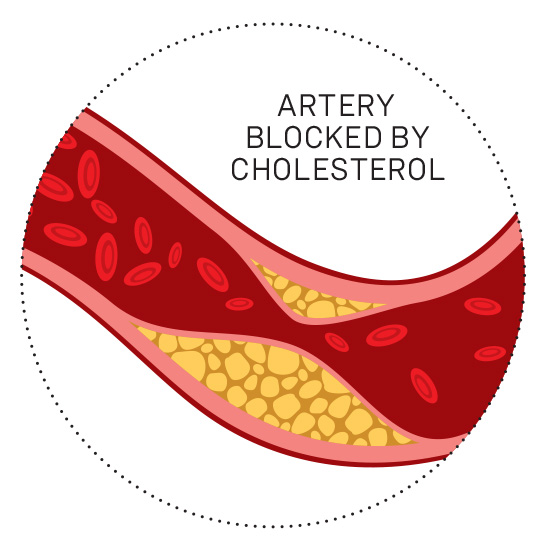
Over many years, high levels of harmful LDL cholesterol in the bloodstream lead to deposits of fat and calcium in your arteries. Eventually these deposits lead to blocked arteries, high blood pressure, heart attack, and stroke. Statins are a class of drugs widely prescribed to lower cholesterol levels and prevent heart disease. U.S. guidelines recommend that everyone with any form of cardiovascular disease should be on a statin. So too should people with LDL cholesterol above 190 mg/dL, and anyone age 40–75 with diabetes who has LDL cholesterol above 70 mg/dL. Other people age 40–75 without diabetes who have LDL cholesterol above 70 mg should be assessed for other cardiovascular risks and offered a statin if at high risk for cardiovascular disease.
Several large studies have shown that people living with HIV (PLWH) have between 1.5–2 times the risk of having a heart attack or other cardiovascular problem compared to HIV-negative people of a similar age, after accounting for other risk factors for heart disease. The risk increases in people over age 45. Inflammation due to HIV and metabolic changes due to HIV treatment are probably the chief causes. At the moment, guidelines say that it’s impossible to tell whether HIV is enough of an independent risk factor to justify starting statin treatment.
A major clinical trial is underway to determine whether taking a statin reduces the risk of cardiovascular problems such as heart attack and stroke for PLWH who are not at high risk for heart disease. The study recruited 7,500 people age 40–75 who have been on HIV treatment for at least six months, and will follow them for up to seven years. Participants are randomly assigned to receive a daily dose of pitavastatin (Livalo) or placebo. Results of the study are expected in 2020 or soon afterwards. You can find out more at reprievetrial.org.
Taking a statin may also reduce your risk of death, although the mechanism isn’t fully understood. Statins may also reduce the risk of developing cancer, but more research is needed to establish by how much.
Despite the recommendations on statin use for people at higher risk of heart disease, many PLWH who are already eligible to take a statin are not receiving this medication. The Infectious Diseases Center of Northwestern Memorial Hospital in Chicago reported recently that only half of PLWH who qualified for statin treatment had been prescribed one. People without diabetes or symptoms of heart disease were less likely to be taking a statin, even if they were at high risk for future heart attack or stroke.1
PLWH who are eligible for statin treatment may be missing out on an important preventive treatment because their doctors have not done a recent assessment of 10-year heart disease risk. This simple review uses your age, gender, race, cholesterol, blood pressure, diabetes, and smoking behavior to calculate your risk.
Some statins are more suitable than others for PLWH. Rosuvastatin (Crestor) has no drug interactions with HIV drugs in the NNRTI or integrase (INSTI) classes, but should be dosed with care in anyone taking a protease inhibitor, and avoided altogether alongside atazanavir (Reyataz).
Dosing of atorvastatin (Lipitor) needs to be adjusted carefully when used with any boosted protease inhibitor or any NNRTI apart from rilpivirine. Pravastatin (Pravachol) doses also need to be adjusted when used with any ritonavir-boosted protease inhibitor or with efavirenz.
Statins have side effects, especially at higher doses. Muscle pain, raised liver enzymes, memory loss, and confusion are common side effects and occur more frequently in older people and in women.
Alternatives to statins are available. Ezetimibe reduces LDL cholesterol in PLWH.2 Newer drugs, PCSK9 inhibitors, are still being tested in PLWH and are intended for people who are not achieving cholesterol goals on statins. Fibrates can reduce triglycerides and improve HDL cholesterol, but have little effect on LDL cholesterol.--Keith Alcorn

